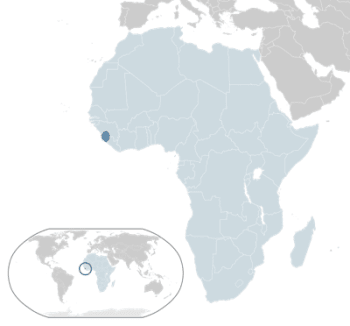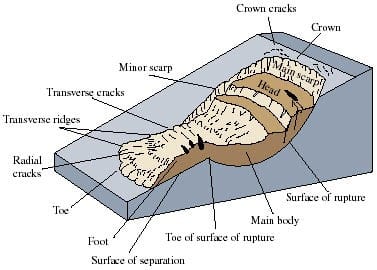Satellite image of mudslide area in Freetown, Sierra Leone, from DigitalGlobe.
Last week, there was a mudslide in Sierra Leone. Subject to heavy rains, large masses of soil came down the hill and into town, crushing houses, suffocating lives… 500 by last count, but they are still counting.
In the tragic history of landslides, of which mudslides are one type, the Sierra Leone disaster is only the latest chapter. Measured by human deaths, the worst was in China in 1920. The Haiyuan landslides, caused by an earthquake of the same name, had an estimated death toll of 100,000. Whole villages were swallowed.
National Geographic, which every month depresses with tales of us destroying our earth, seized upon deforestation as a likely cause. Indeed, the explanation has merit. Tree roots act to keep the soil together. An area of Mount Sugarloaf, up hill from Freetown (Sierra Leon’s capital, population 1.1 million) had been denuded of trees. Also a possible cause: climate change causing more intense storms. Third world countries, like Sierra Leone, struggle to cope with effects as they lack resources and infrastructure.

Sierra Leone, a small country in equatorial Africa.
A mudslide is one of many types of landslides, soil is wet and act more like a liquid flow than solid particles. The USGS lists 24 specific causes, including deforestation by humans, vegetation removal (by fire), mining, earthquakes, etc.

An idealized slump-earth flow showing commonly…

